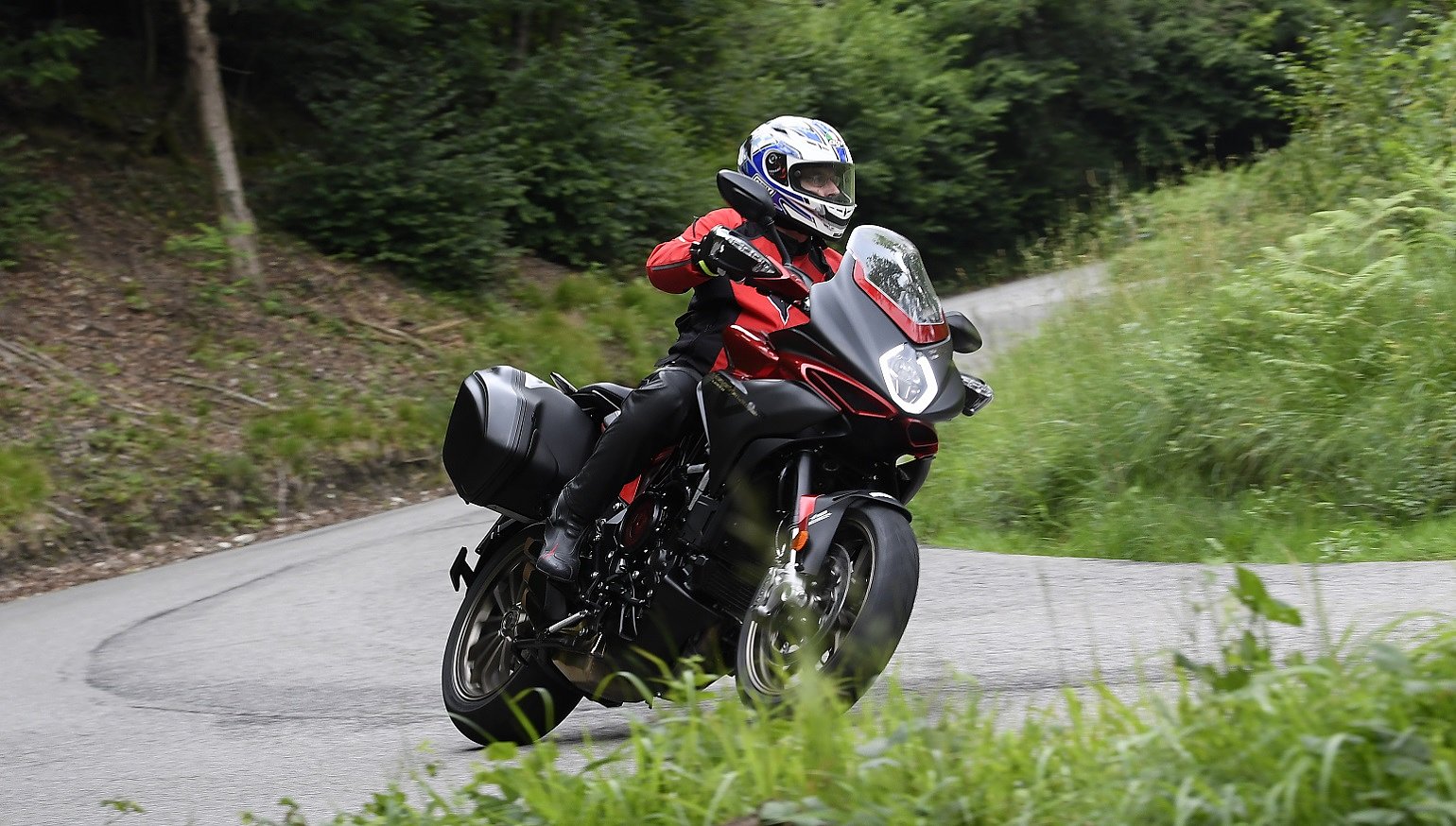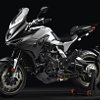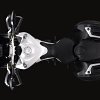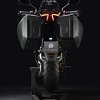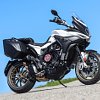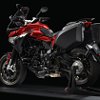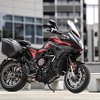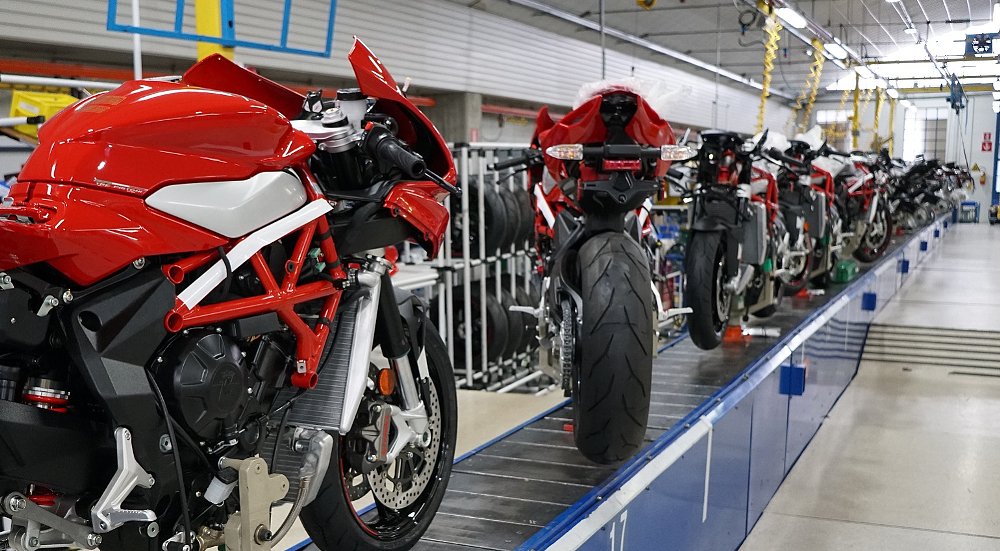"Turismo Veloce" is Italian for fast touring. I guess MV’s ride leaders — one of whom was a leading contender in the Italian national championship’s 600 class — took that "fast" much more to heart than the "touring." He signaled a stop and we all pulled off a narrow, winding road somewhere deep in an Italian alpine forest.
“These roads are dangerous!” exclaimed Motorcyclist’s recent hire, Adam Waheed. Then for emphasis, he repeated himself. “These roads are dangerous!”
No one agreed or disagreed, so I don’t know what anyone else thought, but what crossed my mind was, "Dude, it’s not the roads, it’s the riding."
MV laid out a 77-kilometer test loop for us. The length and general shape of the route, highlighted on the map, reminded me of the Isle of Man TT course. So did some of the roads; about half the course was a darker and more technical version of the Glen Helen section of the Mountain Course. Unfortunately, unlike at the TT, the roads were open. There was lots of traffic — everything from bicyclists to heavy trucks.


The other half of the route was an even older, more densely built-up, and much more heavily trafficked version of the TT’s Kirkmichael section. We blasted through small towns, with 50 kilometer-per-hour posted limits, at 100-plus. When we completed our first lap and re-entered the town of Varese, we came in past the central police station. I thought, “That’s convenient, we can all just turn ourselves in,” but the leader trundled past and immediately wicked it up again for the last couple of kilometers.
Anyway, I’m getting ahead of myself…
Most first ride reports talk about the ride because, a) it’s hard to conduct a meaningful test in a few hours’ time; and b) notwithstanding manufacturers’ enthusiasm for the latest widget, there’s not much real news in the average press briefing.
This time, there was. The "SCS" in Tourismo Veloce Lusso SCS stands for "Smart Clutch System." MV Agusta worked with an American company, Rekluse, to match one of their automatic clutches to a revised engine map and MV’s quick up- and downshift gear change. Rekluse is pretty well known in the dirt world, but until now I don’t think I’ve heard of a street bike sold with one. (Rekluse does make an aftermarket clutch for Harley-Davidson Sportsters.)

You can ride the 800 cc Tourismo Veloce Lusso SCS like a big, fast, twist-and-go scooter. Although it has a clutch lever, it’s there if you want to use, not because you need to use it. It took me a moment to accept the idea that I could stop the bike, and just leave it in first gear, without ever touching the clutch lever.
When you want to go, you just open the throttle, exactly as you would if you were driving a car with an automatic transmission. The Rekluse automatic clutch uses centrifugal force to move wedges that engage the clutch as revs increase, and disengage it if revs drop down to the idle setting. But the transparent function of the Smart Clutch System also depends on a reprogrammed MVICS 2.0 (Motor and Vehicle Integrated Control System) fuel map.

So, when it’s time to go, you just twist the throttle. As revs pick up, the Rekluse clutch engages perfectly, giving you the launch you want, whether you’re riding normally in traffic or, as I was, with an Insane Clown Posse. If you want a race-quality launch, all you need to do is shift your weight forward and whack the throttle open. The Eldor ECU delivers a precisely programmed request for fuel and butterfly position to the Mikuni throttle bodies — a request that exactly matches the same-every-time clutch engagement.
“It’s as if you have Jordi Torres’ left hand,” Gillen told me. In the presentation, MV’s capo, Giovanni Castiglioni, bragged that the 800 cc Tourismo Veloce Lusso was capable of reaching 100 kilometers an hour in 3.1 seconds — nearly as quickly as Torres’ MV Agusta factory Superbike.

Look ma, no hands
In normal use there’s rarely, if ever, any reason to think about the clutch lever; your left hand is devoted only to transmitting your steering input. As your speed picks up, the Tourismo Veloce Lusso SCS relieves your right hand of a lot of duties, too. MV’s EAS 2.0 (Electronically Assisted Shift Up and Down) shift system allows for clutchless shifting. Shift up or down without matching revs. So if you’re riding aggressively, almost all you need to think about is that torque request. There’s no blipping the throttle to match revs.

Considering that in day-to-day life, I ride only old-school bikes that require a lot of clutching and throttle manipulation to ride swiftly and smoothly, I was surprised how easy it was to get used to SCS. In fact, within half a lap of our personal version of Mad Sunday, I was in love with it.
Full disclosure: I can’t compare MV’s SCS to Honda’s dual-clutch system, because I’ve never actually ridden a bike with a dual clutch. But considering that the Rekluse clutch only weighs an ounce or so more than the standard Tourismo Veloce Lusso’s clutch assembly, I think MV Agusta is really on to something. I’m sure that the company will begin rolling out SCS on other models as soon as possible.
The system provides nearly automatic ease of use in stop-and-go settings, and when you pick up the pace it frees up a remarkable amount of rider bandwidth. After an hour and a half, I got off the Tourismo Veloce Lusso SCS convinced that it would be an easy bike to ride well.
For example, there was one little village on our ride where the route called for an acute, and climbing, left turn with a radius much tighter than is usually comfortable on a sport bike. As it happened, a road crew was painting new crosswalk markings; they blocked off half the road. So, we had to negotiate a very tight turn while being careful not to touch the fresh paint. On any other sport bike, it would have required some delicate clutch slipping, but in this case all I had to think about was negotiating the turn.
Of course, perfecting the new clutch system involved attention to a few other details. For example, MV had to engineer a parking brake, because it’s no longer possible to leave the bike in gear to prevent it rolling off the kickstand if you’re forced to park facing downhill.

As MV was developing the SCS system, they found that test riders were inclined to leave test mules in higher gears, and let the clutch solve the problem of getting underway from a stop. That resulted in premature clutch wear. The solution was to remap the ECU to allow normal starts in first and second gear only. In third or above, if you attempt to just roll on the throttle and go, the bike will only creep forward at a walking speed. That’s Eldor’s way of telling you to kick it down a gear or two.
The system is, however, not without flaws. I hit a couple of false neutrals, on both up- and downshifts, in the first few kilometers. After that, I was more assertive with the shift lever and it never happened again. (I admit that as a rider, my biggest flaw is probably that I’m too tentative.) I’m not sure those incidents were related to SCS but I did not experience any such false neutrals when riding the standard-clutch version.
Ironically, I could not find neutral when I wanted to — or at least not when the engine was running. Finding neutral is rarely necessary with the Rekluse clutch, but there are times when it’s nice. For example, if you’re straddling the bike and want to move it backwards, it’s easier to do that when in a full neutral because even a disengaged clutch has some drag. And, I proved that it’s possible to ride away with the parking brake engaged. Luckily, I realized my mistake immediately, before frying the rear brake.
The Tourismo Veloce Lusso has a similar motor to the one in the Brutale RR that I recently wrote about, except that it’s in a somewhat milder state of tune. Just milder. Certainly not mild in absolute terms. The motor has all of the same updates to address past reliability issues. A new TFT dash also provides a much-improved rider interface.

The split-function Sachs fork has the spring in the right leg and damping in the left. Fork (and shock) damping settings are preset automatically for each ride mode. Users can also interface with the bike through an iPhone app that allows them greater control of high- and low-speed damping. The app also has impressive ride recall and display, and social-media sharing potential. I didn’t use it, but I did see it demonstrated, and I’m sure it will really appeal to a lot of users.

The overall package feels light but tall, which is a result of both seat height and width. In the presentation, MV made a big deal of the fact that their claimed dry weight — 423 pounds — is quite a bit lighter than a Ducati Multistrada, although the comparison’s not quite fair (the Multi’s no dirt bike, but it was designed for a wider range of terrain and surface — and heavier duty — than the Veloce.)
It has a comfortable seat, an upright riding position thanks to prominent bar risers, and an adjustable windshield. Although I didn’t get around to trying this feature, it has cruise control. It has well over five gallons of fuel capacity. Vibration was less noticeable than it had been on the Brutale RR. All in all, it was a bike that I could have ridden comfortably for hundreds of miles a day.


Moron More on the ride
I was in the group of journalists that got assigned the SCS version first, and the standard-clutch Tourismo Veloce Lusso second. After a lunch break, we headed out for our second lap in the opposite direction, which involved riding past the police station on the way out of Varese. Shortly thereafter, we passed a hearse. Neither of those things made any impression on our ride leader, who immediately adopted the same rule as before: We pass everyone; no one passes us.
It would have been better to ride the standard version in the morning and the SCS afterwards, because I have to admit, using the clutch seemed like a bit of a hardship. Although it has a hydraulic actuation mechanism, it’s not particularly light.

The width of the seat makes its 33.5-inch height seem even taller at a stop. Especially at one particular stop during photo passes, while making a U-turn on a steep gravel driveway. Without going into details, I’ll just say that MV’s claim that the bike is light seemed true to me, when I had to pick it up. And I was reminded that hard bags serve as useful frame protectors, whether you need them to carry luggage or not.
As I got a little more familiar with the machine in the second session, I decided to move around a little more on it, and I found that the width of the seat also made it hard to know exactly where I was putting my butt. I toggled between the Sport, Touring, and Rain ride modes. I found that I preferred the throttle response in Sport, but the suspension settings in Touring mode. That’s why MV also built in the capability for users to create a Custom setting; it would be easy to create a "Mark" mode that delivered exactly the combination I wanted.

Come on, you didn’t think they’d be cheap, did you?
In the United States, MSRP for the 2018 Turismo Veloce Lusso will be $19,998 and that SCS models will cost $21,998. They will enter production in July and be available in some U.S. dealers by the end of this summer. As I wrote in my recent story on the latest resurrection of MV Agusta, the company's current approach is "Sell less, sell better." There will be no entry-level MV Agusta models, just premium motorcycles in small numbers at premium prices.
My plan is to return to Varsese in a week or so after all the other journalists have cycled through the launch. Assuming any bikes remain intact — which is not a certainty because as we were leaving the Brits were arriving — I hope to borrow a bike for a multi-day, two-up ride.

So, if you really want to know what it’s like in "Tourismo" mode, as well as "Veloce" mode, watch this space for more details.
| MV Agusta Turismo Veloce 800 Lusso SCS | |
|---|---|
| Engine | Three-cylinder, 12-valve, 798 cc four-stroke |
| Bore x stroke | 79.0 mm x 54.3 mm |
| Compression ratio | 12.2:1 |
| Maximum horsepower (claimed, at crank) | 109 at 10,150 rpm |
| Maximum torque (claimed) | 59 foot-pounds at 7,100 rpm |
| Front brakes | Dual 320 mm discs with radial-mount, four-piston Brembo caliper and ABS |
| Rear brake | 220 mm disc with two-piston Brembo caliper and ABS |
| Front suspension | Semi-active Sachs fork with MV Agusta Chassis Stability Control; 6.3 inches of travel |
| Rear suspension | Sachs single shock with MV Agusta Chassis Stability Control; 6.5 inches of travel |
| Tires | 120/70ZR17 front and 190/55ZR17 rear |
| Dry weight (claimed) | 423 pounds |
| Fuel capacity | 5.4 gallons |
| U.S. MSRP | Turismo Veloce Lusso, $19,998; with SCS, $21,998 |































 Riders Preferred Membership
Riders Preferred Membership
